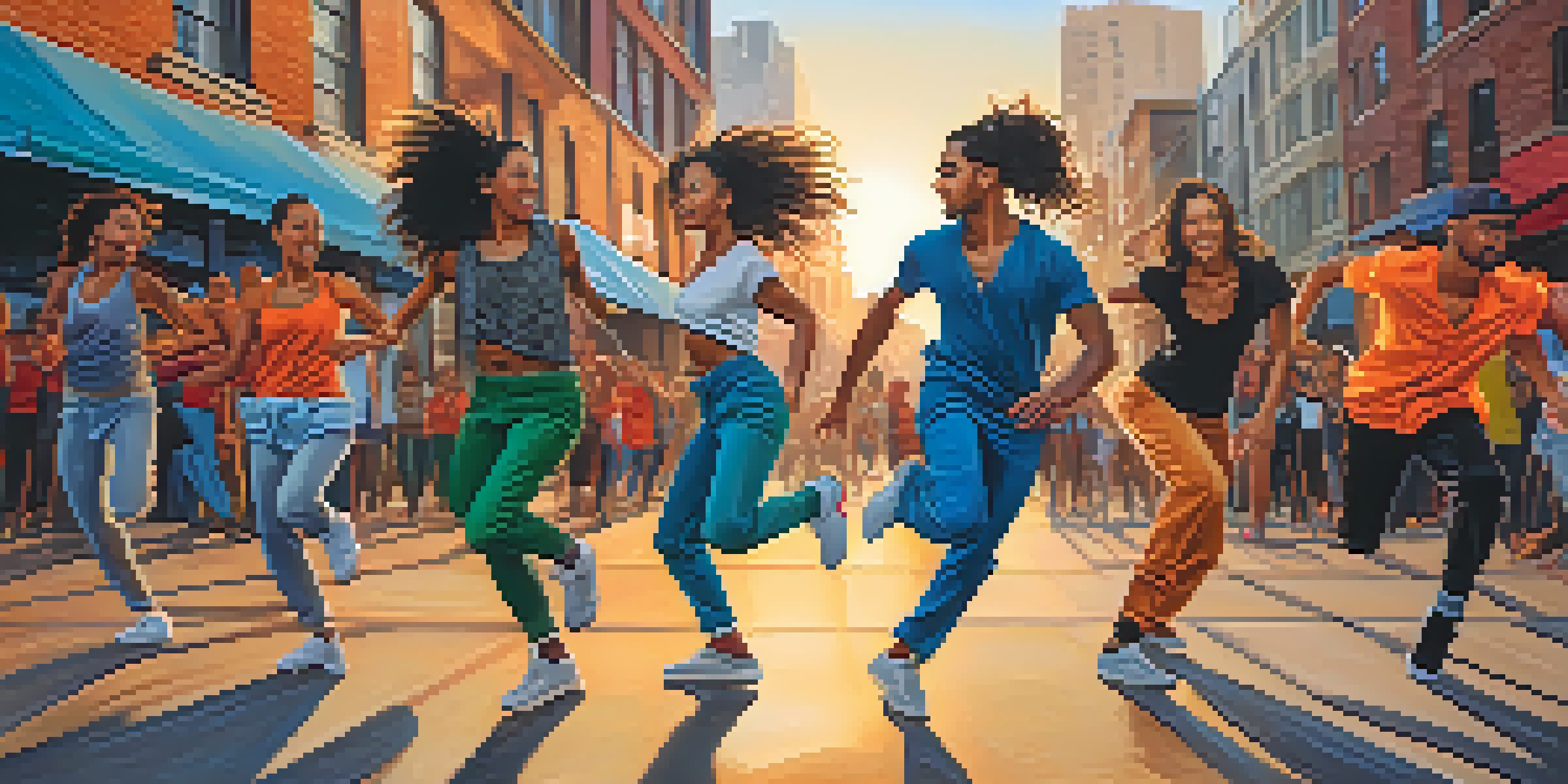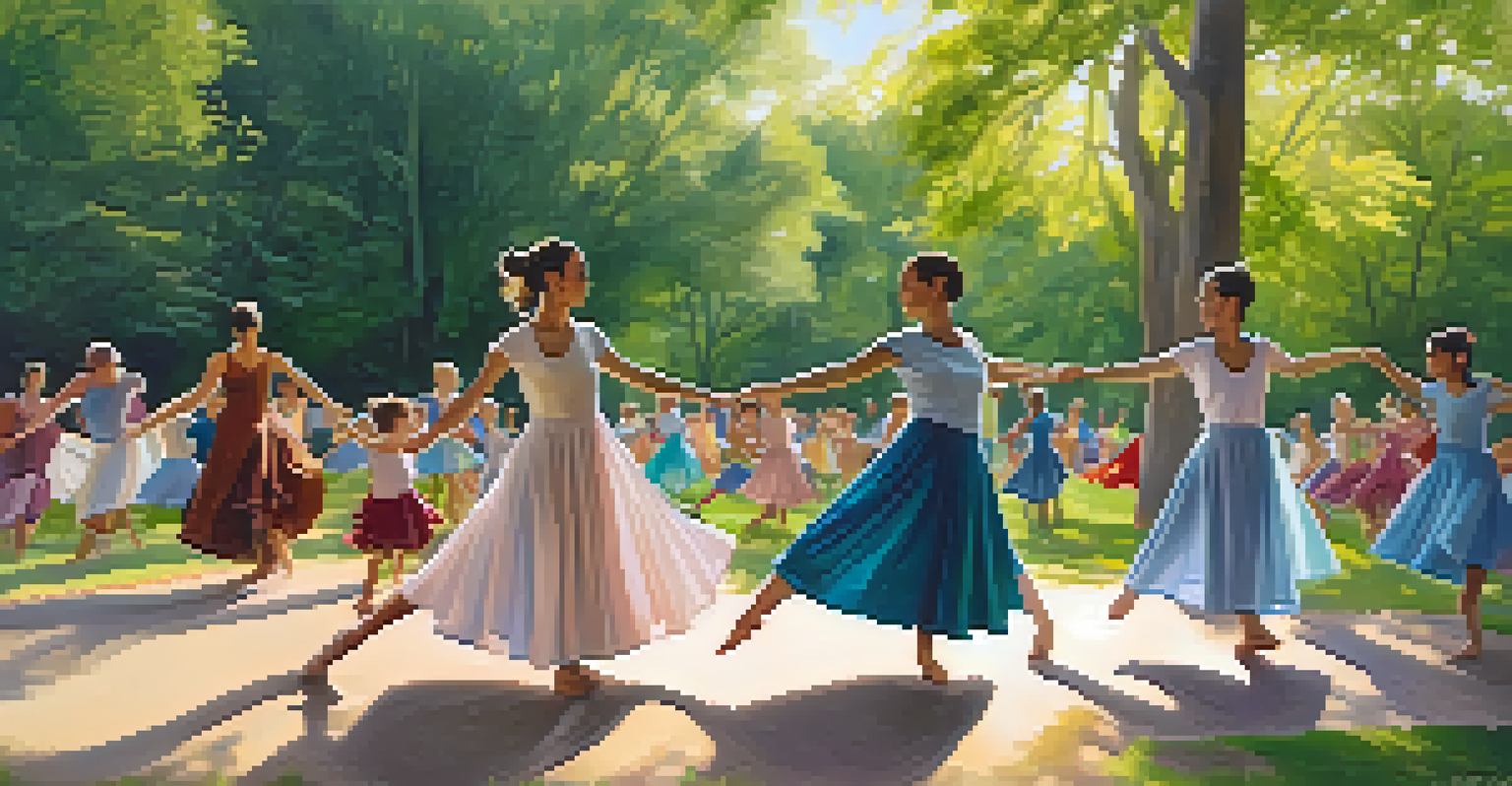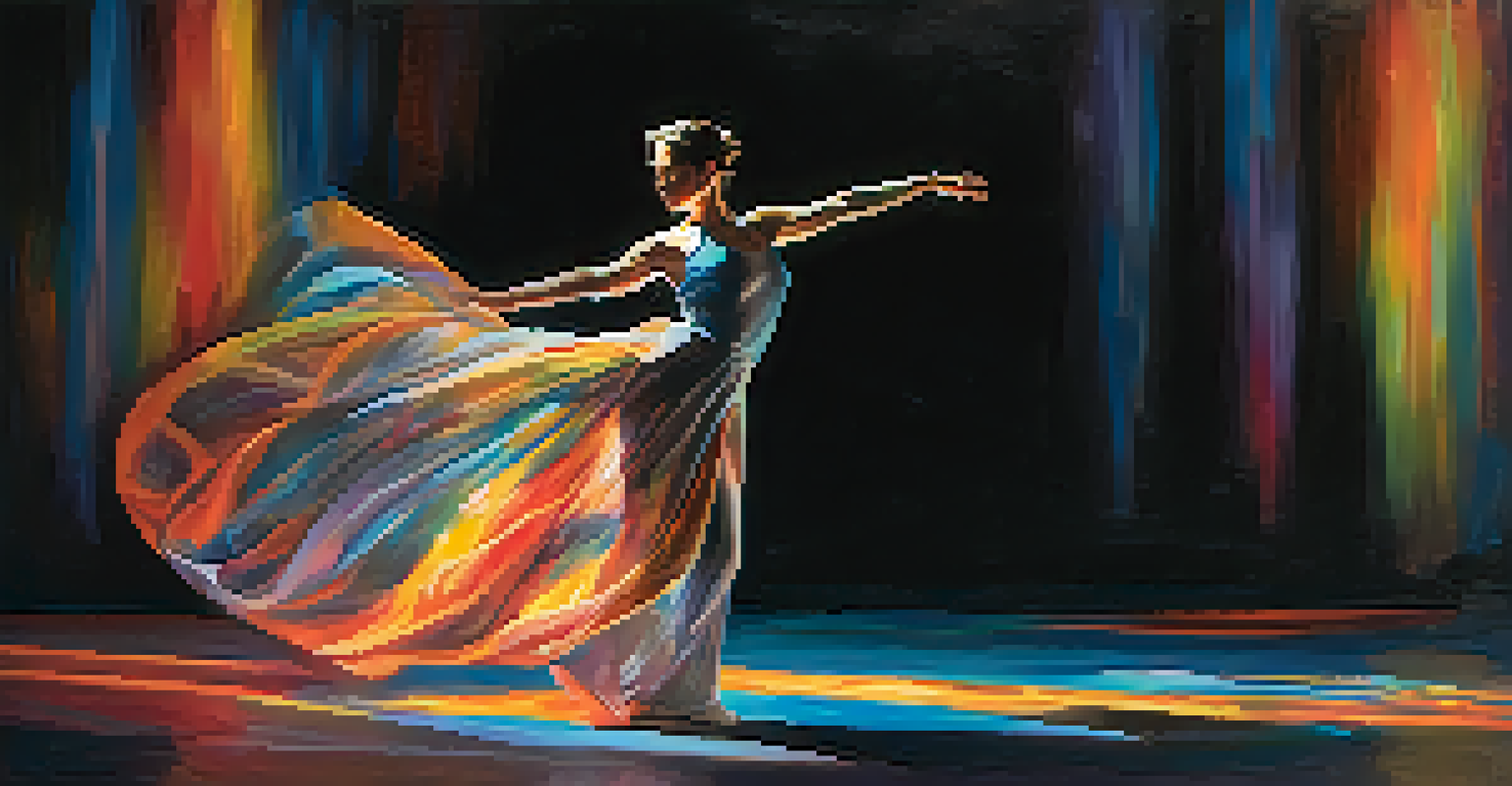Dance as a Voice: Storytelling Through Movement and Activism

Understanding Dance as a Form of Expression
Dance has long been a way for individuals to express their emotions and stories. It transcends language barriers, allowing people from diverse backgrounds to connect and share experiences. Through movement, dancers convey feelings and narratives that words often cannot capture, making it a universal language of expression.
Dance is the hidden language of the soul.
For instance, consider how a simple gesture can communicate joy, sorrow, or frustration. When dancers use their bodies to tell a story, they invite the audience to interpret the emotions behind each movement. This can create a profound connection between the performer and the viewer, fostering empathy and understanding.
As society evolves, the role of dance as a medium for storytelling becomes increasingly relevant. From traditional folk dances that recount historical events to contemporary choreography that addresses social issues, dance continues to evolve as a powerful tool for communication.
The Intersection of Dance and Activism
Activism through dance is not a new concept; it has roots in various cultural movements throughout history. Dancers and choreographers have used their art to raise awareness about social injustices, environmental issues, and human rights violations. This blending of art and activism creates a unique platform for raising consciousness.

One poignant example is the 'Dancing for Justice' movement, where performers take to the streets to express their dissent against various social issues. These dance performances often serve as a rallying point, drawing attention to causes and inspiring action from the audience.
Dance as a Universal Language
Through movement, dance transcends language barriers, allowing individuals to express emotions and connect with diverse audiences.
By harnessing the power of movement, dancers can transform their art into a call for change. The combination of physical expression and emotional weight makes dance a compelling medium for activism, capable of igniting passion and mobilizing communities.
Cultural Narratives: Dance as Historical Record
Dance serves as a living archive, preserving cultural narratives and histories. Many traditional dance forms embody the values, beliefs, and stories of a community, passed down through generations. These dances often reflect the customs and struggles of a people, providing insight into their collective identity.
Art is not a mirror to hold up to society, but a hammer with which to shape it.
For example, the hula dance of Hawaii tells stories of nature, history, and spirituality through its movements and chants. Each gesture is imbued with meaning, revealing layers of cultural significance that resonate with both performers and audiences.
In this way, dance becomes a vital means of storytelling, allowing cultures to honor their past while educating others. By engaging with these traditional forms, contemporary dancers can bridge the gap between generations, ensuring that important narratives are not lost over time.
The Role of Contemporary Dance in Activism
Contemporary dance has emerged as a powerful vehicle for social activism, often addressing pressing issues such as inequality and climate change. Choreographers and dancers are increasingly using their platforms to provoke thought and inspire change. Through innovative movement and collaboration, they create works that challenge societal norms.
For instance, performances that incorporate multimedia elements can amplify the message behind the dance, creating a more immersive experience for the audience. This fusion of art and technology enhances the storytelling aspect, making the activism even more impactful.
Activism Through Dance
Dancers utilize their art to raise awareness about social issues, transforming performances into powerful calls for change.
Moreover, contemporary dance often encourages audience participation, blurring the line between performer and viewer. This engagement fosters a sense of community and shared purpose, motivating individuals to take action beyond the performance space.
Dance as a Healing Tool for Social Movements
Dance has the remarkable ability to heal and unite individuals within social movements. Through the shared experience of movement, participants can process trauma, express grief, and find solidarity. This collective healing is essential in movements where people are fighting for justice and equality.
Consider the 'Dance for Peace' initiatives that bring together individuals from conflict-ridden areas to express their hopes for a better future. These gatherings foster connection and understanding, using dance as a means to bridge divides and build community.
In essence, dance becomes a form of catharsis, allowing participants to release pent-up emotions while also galvanizing them towards collective action. This therapeutic aspect of dance enriches social movements, making them more resilient and inclusive.
The Global Impact of Dance Activism
Dance activism is not confined to any one region; it resonates on a global scale. Across continents, dancers are using their craft to challenge oppressive systems and advocate for change. The beauty of this movement lies in its diversity, showcasing a multitude of voices and perspectives.
Take, for example, the global flash mob phenomenon, where dancers unite in public spaces to perform choreographed routines, often with a message of solidarity. These spontaneous expressions of art can interrupt daily life, sparking conversations and raising awareness about various issues.
Dance Preserves Cultural Narratives
Traditional dance forms serve as living archives, embodying the values and stories of communities while educating future generations.
Through social media, these dance movements can reach a wider audience, amplifying their impact. This interconnectedness allows dancers to share their stories and struggles, fostering a global community of activists united by the power of movement.
Incorporating Dance into Everyday Activism
Incorporating dance into everyday activism can be as simple as sharing movement in local communities. Dance workshops and classes can introduce participants to the power of expression and storytelling through movement. These gatherings create a sense of belonging while empowering individuals to use their bodies as instruments of change.
Moreover, community performances can serve as a platform for dialogue, where stories of struggle and resilience are shared through dance. This not only entertains but also educates, encouraging audiences to reflect on important social issues.

By embracing dance as a tool for activism in our daily lives, we can cultivate a culture of awareness and empathy. Whether it's through organized events or spontaneous gatherings, every movement can contribute to a larger narrative of change.